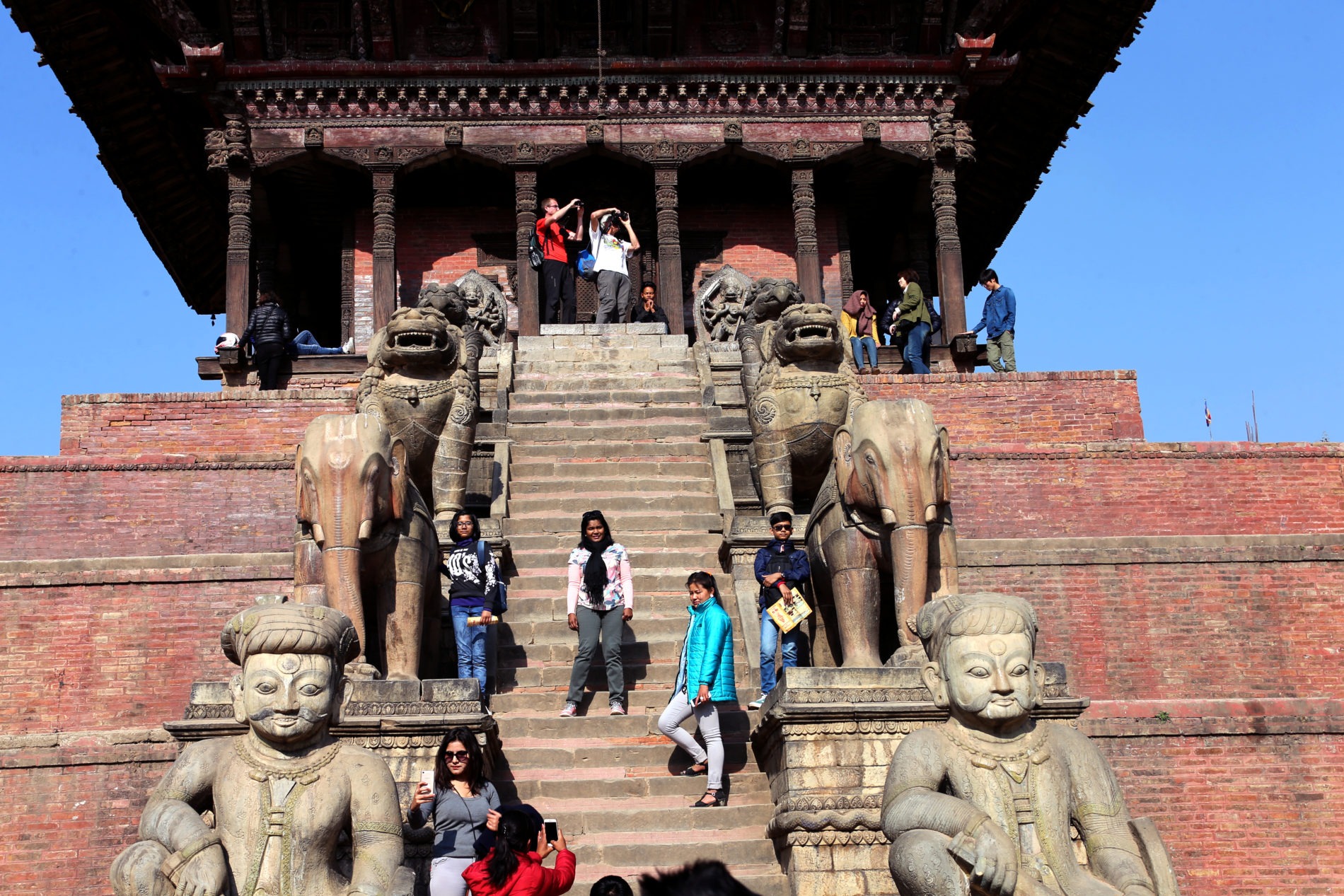2nd Day 05.01.2018 : Swayambunath, Bhaktapur, Patan, and Boudhnath
SWAYAMBUNATH-
Is also called the monkey temple because they have a lot of monkeys that are said to be holy.
Shing.kun may be a corruption of the local Nepal language name for the complex, Singgu, meaning ‘self-sprung’.
They are holy because Manjushri, the bodhisattva of wisdom and learning was raising the hill which the stupa stands on.
BHAKTAPUR –
Bhaktapur, literally translates to Place of devotees.
Bhaktapur was the largest of the three Newar kingdoms of the Kathmandu Valley and was the capital of Nepal during the great ‘Malla Kingdom’ until the second half of the 15th century.
Bhaktapur has the best-preserved palace courtyards and old city center in Nepal and is listed as a World Heritage Site by UNESCO for its rich culture, temples, and wood, metal and stone artworks.
PATAN CITY –
– is the third largest city of Nepal after Kathmandu and Pokhara
It is called city of festival and feast, fine ancient art, making of metallic and stone carving statue.
Lalitpur is believed to have been founded in the third century BC by the Kirat dynasty and later expanded by Licchavis in the sixth century
BOUDHNATH –
The stupa’s massive mandala makes it one of the largest spherical stupas in Nepal.
As of 1979, Boudhanath is a UNESCO World Heritage Site.
The construction materials, soil, brick, and stone, were carried on elephants, horses, donkeys and other animals to the site




